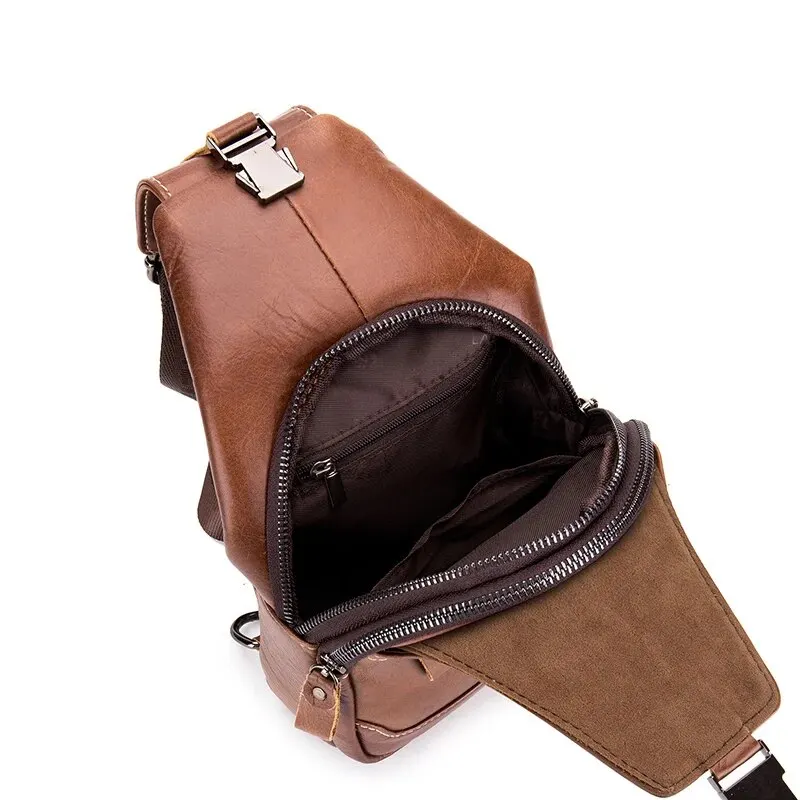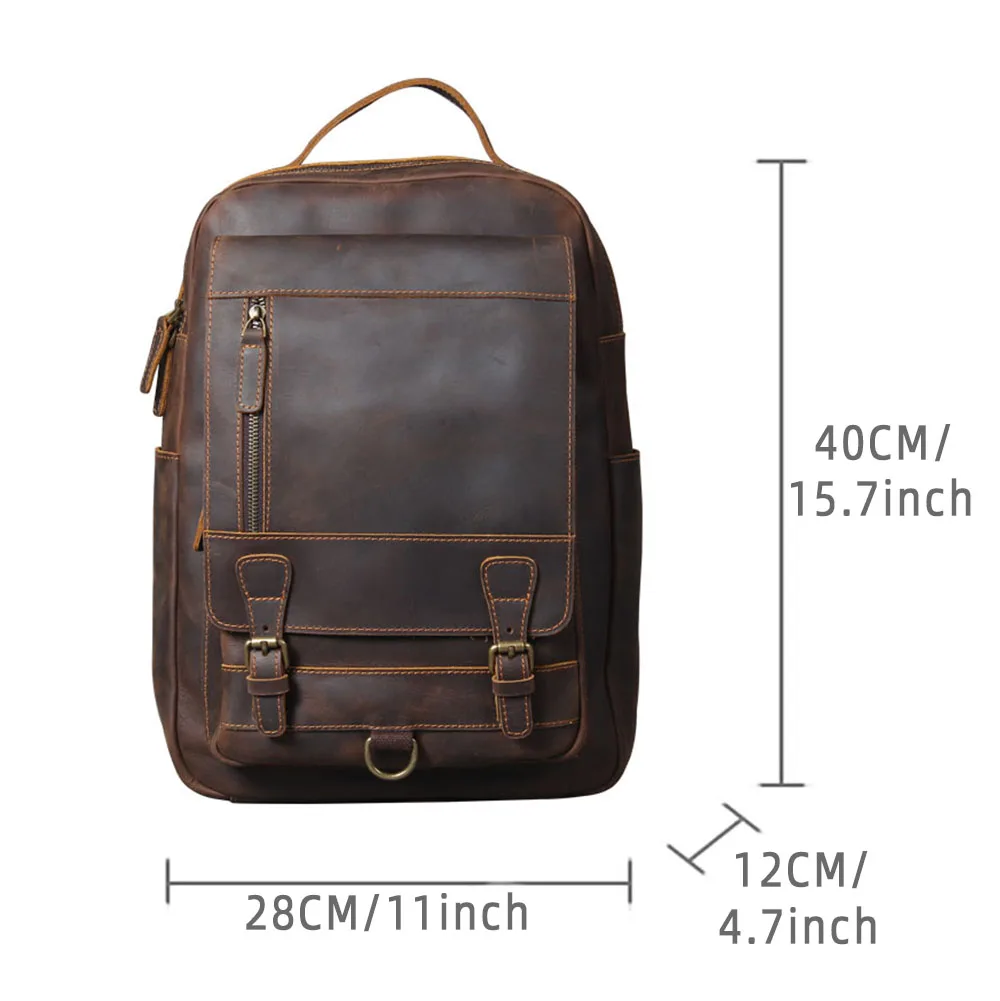The Environmental Footprint of Traditional Leather
When we examine traditional leather production, we’re actually looking at two distinct processes that each carry their own environmental impact: livestock farming and tanning. This dual-stage production creates a complex environmental footprint that deserves careful consideration.
Cattle farming, the first stage of leather production, presents several significant environmental challenges:
Greenhouse Gas Emissions: Cattle release methane, a potent greenhouse gas that contributes substantially to climate change. Studies suggest that leather production can generate between 16.7 and 39.3 pounds of CO2 equivalent per square foot of finished leather.
Land Use: Raising cattle requires extensive land, often leading to deforestation. The Amazon rainforest has seen significant clearing to create cattle pastures, directly impacting biodiversity.
Water Consumption: Livestock farming demands enormous water resources, with estimates suggesting that producing a single pound of leather requires thousands of gallons of water throughout the entire process.
The tanning process introduces additional environmental concerns:
Chemical Pollution: Chrome tanning, the most common method, uses chromium sulfates, formaldehyde, and other potentially harmful chemicals that can contaminate water sources if not properly managed.
Water Usage: Traditional tanning processes require 4-8 gallons of water per pound of leather, creating potential for water pollution if wastewater isn’t properly treated.
Despite these impacts, leather does offer one significant environmental advantage: durability. Understanding how proper leather care extends product life can significantly reduce its environmental impact over time. High-quality leather products can last decades when maintained correctly, reducing the need for frequent replacements.
This longevity factor is particularly notable with full grain leather products known for durability and longevity, which develop character while maintaining structural integrity over many years of use.
As we assess leather’s environmental impact, it’s essential to consider both the production footprint and the product’s entire lifecycle, including its longevity compared to alternatives.
Understanding Synthetic Leather Alternatives
Synthetic leather alternatives, commonly known as “pleather” or “vegan leather,” have gained popularity as alternatives to traditional animal leather. However, their environmental profile deserves careful examination.
These materials primarily fall into two categories: PVC (polyvinyl chloride) leather and PU (polyurethane) leather. Both are petroleum-based products derived from fossil fuels, which immediately raises sustainability questions about resource depletion and carbon emissions.
The manufacturing process for synthetic leathers involves:
– Petroleum extraction and refining
– Chemical processing to create plastic polymers
– Addition of plasticizers, colorants, and other additives
– Application to a fabric backing
– Texturing to mimic leather appearance
From an environmental perspective, these materials present several concerns:
PU leather production typically uses dimethylformamide (DMF), a solvent with significant environmental and health impacts. Production facilities release volatile organic compounds (VOCs) that contribute to air pollution. Additionally, manufacturing synthetic leather is energy-intensive, requiring approximately 30% more energy than traditional leather processing.
Perhaps most concerning is what happens at the end of a synthetic leather product’s life. Unlike natural leather, most synthetic alternatives don’t biodegrade. Instead, they can persist in landfills for centuries. When they do break down, they release microplastics that contaminate water systems and enter food chains. Research has found that a single synthetic leather item can shed thousands of microplastic particles throughout its use.
Our synthetic leather alternative products demonstrate that these materials do have their place in the market, especially for consumers with specific ethical concerns about animal products. However, it’s important to recognize that “vegan” doesn’t automatically mean “environmentally friendly.”
As we’ll explore next, newer bio-based alternatives are attempting to address both the ethical and environmental concerns associated with traditional and synthetic leathers.
Bio-Based Innovative Alternatives: A New Frontier

The search for truly sustainable leather alternatives has sparked remarkable innovation, leading to a new generation of bio-based materials that aim to minimize environmental impact while maintaining functionality. These materials represent exciting possibilities for the future of sustainable fashion and accessories.
Several notable plant-based leather alternatives have emerged:
Piñatex: Made from pineapple leaf fibers (agricultural waste from pineapple harvesting), this material repurposes what would otherwise be discarded. The production requires minimal additional resources since the raw material is a byproduct.
Mushroom Leather (Mylo™): Created from mycelium, the root structure of mushrooms, this material can be grown in labs using minimal resources. It requires significantly less water and land than animal leather production.
Apple Leather: Utilizes apple pomace and peels from the fruit juice industry, transforming food waste into a usable textile that resembles leather.
Cactus Leather: Developed using nopal cactus leaves, this material requires minimal water and grows on land unsuitable for many other crops.
These innovative materials offer several environmental advantages:
– They often utilize agricultural waste or fast-growing renewable resources
– Many require significantly less water than traditional leather production
– They generally avoid the methane emissions associated with livestock
– Some reduce the need for toxic chemicals in processing
However, it’s important to note that most bio-based leathers still incorporate some synthetic materials. Many use polyurethane as a binding agent or coating, making them hybrid materials rather than purely natural products. For example, Piñatex contains roughly 20% PU resin to provide durability and water resistance.
Exploring how innovations are changing leather production reveals that these materials represent an evolving field where sustainability benefits must be weighed against current limitations in performance and scale. Production volumes remain relatively small compared to traditional leather, affecting both price and availability.
As research continues and manufacturing processes improve, these bio-based alternatives may eventually address more of the sustainability challenges posed by both traditional leather and synthetic alternatives. For now, they represent promising innovations that are steadily gaining market share as consumers seek more environmentally friendly options.
Life Cycle Assessment: Comparing Environmental Impacts
To truly understand the environmental footprint of different materials, we need to examine their entire life cycle—from raw material extraction through manufacturing, use, and end-of-life disposal. Life Cycle Assessment (LCA) methodology provides a scientific framework for this comprehensive comparison.
When comparing leather and its alternatives across key environmental indicators, we find significant variations that complicate simple “better or worse” judgments:
| Material | GHG Emissions | Water Usage | Land Use | Chemical Pollution | Biodegradability |
|---|---|---|---|---|---|
| Traditional Leather | High (cattle farming) | Very high | Extensive | High (chrome tanning) | Yes (if natural tanning) |
| PU Synthetic Leather | Moderate | Low-moderate | Low | High | No |
| PVC Synthetic Leather | High | Moderate | Low | Very high | No |
| Piñatex | Low-moderate | Low | Low (uses waste) | Moderate | Partial |
| Mushroom Leather | Low | Very low | Very low | Low | Yes |
The environmental impact of each material varies significantly depending on which stage of the lifecycle we examine. For example, traditional leather has its highest impact during the raw material (cattle) phase, while synthetic alternatives may have lower production impacts but higher end-of-life consequences due to their non-biodegradability.
Recent LCA studies have found that traditional leather’s carbon footprint ranges from 10-20 kg CO2 equivalent per square meter, while synthetic leather ranges from 5-10 kg CO2 equivalent. However, these figures don’t account for longevity or end-of-life impacts, which can dramatically shift the overall environmental calculation.
How different treatment methods affect environmental impact becomes particularly relevant when considering that chrome-tanned leather has a significantly different ecological footprint than vegetable-tanned leather, despite both being categorized as “traditional leather.”
It’s also important to note that the LCA field for newer bio-based materials is still developing, with limited data available. Many comparative studies are funded by industry stakeholders, highlighting the need for independent research.
What’s clear from existing LCA studies is that environmental impact isn’t determined by material category alone—production methods, energy sources, waste management practices, and product lifespan all play crucial roles in determining true sustainability.
Durability and Longevity Considerations
When assessing environmental impact, one critical factor often overlooked is product lifespan. A material with a higher initial production footprint might actually have a lower lifetime impact if it lasts significantly longer than alternatives.
Traditional leather excels in this category. Quality leather goods can last decades—sometimes even generations—with proper care. This longevity fundamentally changes the sustainability equation. While the initial environmental cost of leather production is high, that impact is amortized over many years of use.
For example, a well-made leather backpack might last 15-20 years, while a synthetic alternative typically needs replacement every 3-5 years. This means the synthetic option might need to be manufactured 3-4 times over the same period, multiplying its environmental footprint.
The durability difference stems from leather’s natural fiber structure, which allows it to:
– Flex without breaking
– Develop a protective patina
– Maintain structural integrity even with wear
– Be repaired rather than replaced when damaged
How leather ages and develops character over time represents a unique sustainability advantage that many alternatives struggle to match. As leather ages, it often becomes more supple and develops a rich patina, making older items still desirable rather than disposable.
This creates what might be called a “sustainability paradox”—materials with higher initial environmental impacts might be better long-term choices if they significantly outlast alternatives. Even some synthetic materials designed to mimic leather’s appearance begin to crack, peel, or delaminate after a few years of regular use.
While newer bio-based alternatives show promise, their long-term durability remains unproven, as most haven’t been on the market long enough to evaluate their performance over decades. This uncertainty makes it difficult to fully assess their lifetime environmental impact compared to traditional leather.
Ultimately, from an environmental perspective, the most sustainable product is often one that doesn’t need to be replaced frequently—highlighting the importance of considering durability alongside production impacts.
The Role of Responsible Manufacturing Practices
The environmental impact of any material—leather or alternatives—can be significantly influenced by how it’s manufactured. Responsible production methods can substantially reduce ecological footprints across all material categories.
For traditional leather, the tanning process represents a critical environmental decision point. Chrome tanning, though efficient and widespread, involves potentially harmful chemicals. In contrast, sustainable tanning alternatives with lower environmental impact use plant-based tannins from tree bark, leaves, and other natural sources. While vegetable tanning takes longer and costs more, it eliminates chromium pollution risks and produces biodegradable leather.
Manufacturing improvements for synthetic alternatives include:
– Water-based polyurethane systems that reduce solvent use
– Bio-based polyurethanes that incorporate plant-derived components
– Closed-loop production systems that capture and reuse chemicals
– Energy-efficient production facilities powered by renewable sources
Industry certifications help identify responsibly produced materials:
– The Leather Working Group (LWG) certifies tanneries based on environmental performance
– OEKO-TEX Standard 100 ensures textiles are free from harmful substances
– Global Organic Textile Standard (GOTS) certifies organic status for plant-based inputs
Manufacturing location also significantly impacts environmental footprint. Factories powered by renewable energy have substantially lower carbon emissions than those using coal or other fossil fuels. Similarly, facilities with advanced water treatment systems reduce pollution regardless of which material they produce.
Waste management practices throughout production create another opportunity for improvement. Cutting-edge leather manufacturers now implement systems to:
– Recover and reuse chromium from tanning processes
– Recycle water used in production
– Convert leather scraps into bonded leather products instead of sending them to landfill
These responsible manufacturing practices demonstrate that how a material is produced can be as important as what it’s made from when assessing environmental impact. As production technologies continue to evolve, the sustainability gap between different materials may narrow, particularly if innovation focuses on reducing the most significant impacts of each material type.
Beyond Environmental Impact: Ethical Considerations

When evaluating materials, environmental factors tell only part of the sustainability story. Truly responsible decision-making must also consider ethical dimensions that include animal welfare and human impacts throughout the supply chain.
Traditional leather production raises animal welfare concerns that extend beyond the environmental footprint:
– Animal living conditions and treatment in industrial farming
– Slaughter practices and standards
– Whether leather comes from animals raised specifically for their hides or as a byproduct of meat production
Social impacts vary widely across different material supply chains:
– Working conditions in tanneries, particularly in regions with less stringent labor protections
– Chemical exposure risks for workers in both traditional and synthetic material production
– Fair compensation throughout the supply chain
– Community impacts near production facilities
Ethical sourcing practices in the leather industry have evolved to address these concerns, with transparent supply chains allowing consumers to make more informed choices. Certifications like Leather Working Group not only cover environmental standards but also include social audit components.
For synthetic and bio-based alternatives, ethical considerations include:
– Working conditions in chemical manufacturing facilities
– Agricultural practices for bio-based materials (fair labor, pesticide use)
– Land use competition between crops for materials versus food production
– Community impacts from manufacturing facilities
A holistic view of sustainability recognizes that environmental and social impacts are interconnected. For instance, pollution from production facilities affects the health of nearby communities, creating both environmental and social concerns. Similarly, sustainable farming practices for bio-based materials benefit both ecosystems and the communities that depend on them.
When making material choices, consumers increasingly demand transparency across all these dimensions—seeking products that minimize harm to the planet, animals, and people. This comprehensive approach to sustainability recognizes that truly responsible products must address the full spectrum of their impacts.
Consumer Guide: Making Informed Material Choices
Making truly sustainable material choices requires looking beyond marketing claims to understand the full impact of products. Here’s how to become a more informed consumer:
When evaluating leather or alternative products, ask these key questions:
– Where and how was this material sourced?
– What chemicals were used in processing?
– How long is this product designed to last?
– Can it be repaired when damaged?
– What happens at the end of its useful life?
Look for these meaningful certifications:
– Leather Working Group (LWG): Certifies environmentally responsible leather manufacturing
– OEKO-TEX Standard 100: Ensures textiles are free from harmful chemicals
– Bluesign: Indicates environmentally safe production
– Global Organic Textile Standard (GOTS): Certifies organic materials meet environmental and social criteria
Durability and proper care significantly impact a product’s lifetime environmental footprint. Maintenance practices that extend product life are essential sustainability considerations. For leather products, regular conditioning prevents cracking and extends usability. For synthetic alternatives, proper cleaning methods prevent delamination and premature wear.
Consider these additional sustainability factors:
– Versatile, timeless designs that won’t quickly become outdated
– Repairability—can zippers, straps, or worn areas be fixed?
– Multi-functionality that reduces the need for multiple products
– Company transparency about sourcing and manufacturing
Remember that the most sustainable product is often one you already own. Before purchasing new items, consider whether existing products can be repaired or repurposed. When new purchases are necessary, invest in quality items designed to last, regardless of material choice.
14 Inch Leather Laptop Backpack, Brown Leather Backpack, Men's Leather Backpack, Vintage Leather Backpack
Price range: $177.28 through $199.12 Select options This product has multiple variants. The options may be chosen on the product pageCarry On Leather Backpack, Roll Top Leather Backpack
Price range: $77.76 through $96.48 Select options This product has multiple variants. The options may be chosen on the product pageDesigner Mini Backpack, Mini Leather Backpack, Small Leather Sling Backpack, Women's Leather Backpack
Price range: $95.76 through $98.80 Select options This product has multiple variants. The options may be chosen on the product pageDesigner Mini Backpack, Designer Women's Backpack, Mini Leather Backpack, Women's Leather Backpack
Price range: $135.92 through $137.64 Select options This product has multiple variants. The options may be chosen on the product pageBlack Leather Backpack, Small Leather Backpack, Women's Leather Backpack
Price range: $112.96 through $116.12 Select options This product has multiple variants. The options may be chosen on the product page- Price range: $80.72 through $108.04 Select options This product has multiple variants. The options may be chosen on the product page
By considering these factors, you can make choices aligned with both your values and genuine sustainability, rather than being swayed by oversimplified marketing claims.
Are All Vegan Alternatives More Eco-Friendly Than Leather?
A common misconception is that all vegan leather alternatives are automatically better for the environment than traditional leather. The reality is considerably more nuanced.
Many synthetic vegan leathers are petroleum-based plastics (PVC or polyurethane) that come with significant environmental concerns:
– Dependency on fossil fuel extraction
– Energy-intensive manufacturing processes
– Release of volatile organic compounds during production
– Non-biodegradability and microplastic pollution
– Relatively short usable lifespan
Research comparing the environmental footprints of standard PVC synthetic leather versus traditionally produced leather often shows surprisingly complex results. While synthetic options avoid the methane emissions and land use associated with raising cattle, their fossil fuel dependency and end-of-life issues create different but substantial environmental problems.
The term “vegan” specifically addresses the absence of animal products but says nothing about environmental impact. Some highly processed vegan materials may actually have a larger carbon footprint than responsibly sourced leather, particularly when accounting for the shorter lifespan of many synthetic alternatives.
Traditional leather product options for comparison often demonstrate superior durability and aging characteristics, which can mean fewer replacements over time. This longevity factor significantly affects the lifetime environmental impact calculation.
The newest generation of plant-based vegan leathers shows more promise from an environmental perspective, but even these often contain synthetic components for durability and water resistance. The environmental advantage comes from reducing (not eliminating) fossil fuel dependency and incorporating renewable or recycled materials.
When evaluating material sustainability, looking beyond marketing terms to understand specific composition and production methods provides a more accurate picture of true environmental impact.
How Does Summit Carry Select Materials for Environmental Responsibility?

At Summit Carry, we approach material selection with a thorough understanding of environmental impacts throughout the product lifecycle. Our philosophy centers on balancing immediate production impacts with long-term sustainability through durability.
For our traditional leather products, we prioritize:
– Leather sourced from suppliers certified by the Leather Working Group
– Tanneries employing water recycling and energy efficiency measures
– Hides that are byproducts of the food industry rather than from animals raised solely for leather
– Full-grain leather selected for its superior durability and aging characteristics
Our production processes emphasize responsible practices:
– Minimizing chemical usage and selecting less harmful alternatives when possible
– Reducing waste through efficient pattern cutting and repurposing of leather scraps
– Working with manufacturing partners who maintain safe working conditions and fair labor practices
– Designing products for longevity and repairability
We view longevity as a core environmental strategy. By creating products that last for many years and develop character with age, we reduce the need for frequent replacements. Understanding maintenance practices that extend product life is an essential component of our approach to sustainability.
While we primarily focus on leather products, we apply the same rigorous standards to any alternative materials we use, evaluating them for both environmental impact and long-term performance. We believe that transparency about material sources and production methods is essential for allowing customers to make choices aligned with their values.
Can Recycled Leather Be a Sustainable Alternative?
Recycled leather offers an innovative approach to sustainability by repurposing leather scraps that would otherwise become waste. This material typically comes in two forms:
Bonded leather combines leather fibers with binding agents (similar to how paper is made), creating a new material from scraps. Meanwhile, recycled leather involves mechanically breaking down leather waste and reforming it without as many additional binders.
The environmental benefits of recycled leather include:
– Reduction of waste going to landfill
– Lower resource consumption compared to new leather production
– Utilization of materials that already exist rather than creating demand for new raw materials
– Smaller carbon footprint compared to virgin leather production
However, recycled leather does have limitations. Most notably, it typically doesn’t match the durability or aesthetic aging properties of traditional full-grain leather. Bonded leather, in particular, often has a significantly shorter lifespan and may peel or crack within a few years of use.
The binding agents used in some recycled leather products can also include polyurethane or other synthetic materials, creating a hybrid product rather than a purely natural one. This affects both the environmental footprint and end-of-life biodegradability.
For consumers seeking the look and feel of leather with reduced environmental impact, recycled options can be a meaningful compromise. Many brands are incorporating these materials into products that emphasize timeless design for longevity, helping to extend the useful life of these recycled materials.
As recycling technologies improve, we may see advances in recycled leather quality and durability, potentially making it an increasingly viable sustainable alternative for certain applications.







